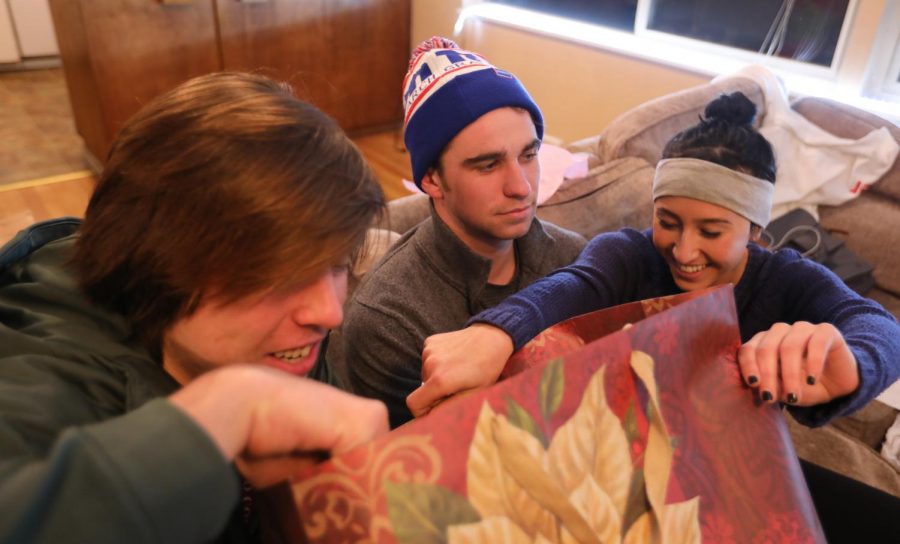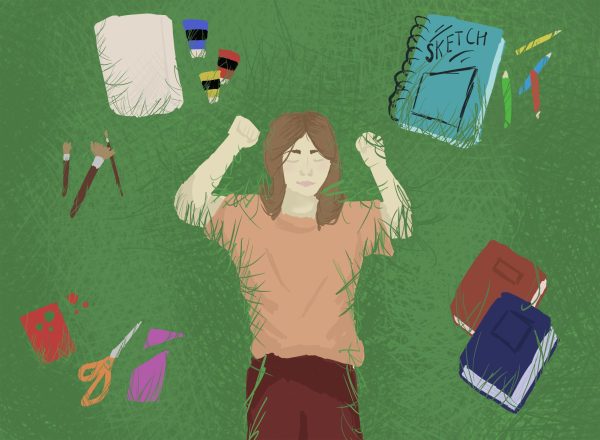Seasonal affective disorder causes wintertime depression
Lack of sunlight during winter months results in negative emotions.
EZEKIEL NELSON | Evergreen Photo Illustration
Some students experience depression during the winter months and holiday seasons. For students with Seasonal Affective disorder, the darkness in the winter months causes them to produce more melatonin.
January 10, 2018
The weather is getting colder and the sky darker. For some people with seasonal affective disorder, this time of year may affect their mental and physical health.
Seasonal affective disorder (SAD) is a type of depression that correlates with the changing of seasons throughout the year. According to the National Institute of Mental Health, for most people with SAD, symptoms appear in the fall and continue throughout the winter months.
Ryan McLaughlin, assistant professor in the Department of Integrative Physiology and Neuroscience at WSU, said people with SAD may be more susceptible to disrupted circadian rhythms, or the body’s internal 24-hour rhythm.
The cause of this disruption is overproduction of the hormone melatonin brought on by increasing periods of darkness, according to the National Institute of Mental Health.
Circadian rhythms work to tell you when to produce hormones, sleep, or wake up at a certain time every day, McLaughlin said.
A delay in someone’s circadian rhythm could cause someone to feel like they need to sleep more, according to the National Institute of Mental Health.
Gabrielle Daly, a WSU kinesiology major and Kinesiology Club officer, said she experienced seasonal depression from December 2016 until after the following spring break.
“It’s different with every person,” Daly said. “I think it’s just a case-by-case basis. I mean, there is obviously those general symptoms that most people can get.”
Symptoms may include oversleeping, change in eating habits, weight gain and feeling exhausted the majority of the day, according to the National Institute of Mental Health.
“I would sleep all day,” Daly said. “I couldn’t get myself out of bed. I felt paralyzed.”
Other signs of SAD include feeling depressed almost every day, having low energy, struggling to focus, and feeling hopeless, guilty or worthless, according to the National Institute of Mental Health.
“I did go to class [and] I still did stuff,” Daly said. “It was just very, very hard to find the motivation to do it and to actually get things done.”
When Daly went home to Las Vegas for the 2017 spring break, she felt great because she spent time outside. She said she felt recharged when she came back to school, but the feeling wore off after about a week.
Treatment for SAD can be discussed with a doctor after diagnosis. One of the treatments known to remedy SAD is light therapy, according to the National Institute of Mental Health.
Light therapy treatment involves receiving light through a special light box for 20 minutes to an hour after waking up. This method of therapy mimics natural light and causes brain chemicals to change a person’s mood, according to the National Institute of Mental Health. Before using this treatment, medical advice is recommended.
Daly said she is looking into buying a sun lamp, which emits UV rays meant to help improve one’s mood.
“But I think everybody is different,” Daly said, “and finding out what works for them is really the only thing that they can do.”
For those who experience seasonal depression, Daly said, they will get through it. They aren’t alone, and getting out of seasonal depression requires effort.
“You just have to try and find the motivation and get yourself up and do it,” she said. “And I think having somebody help you through it, helps.”






















